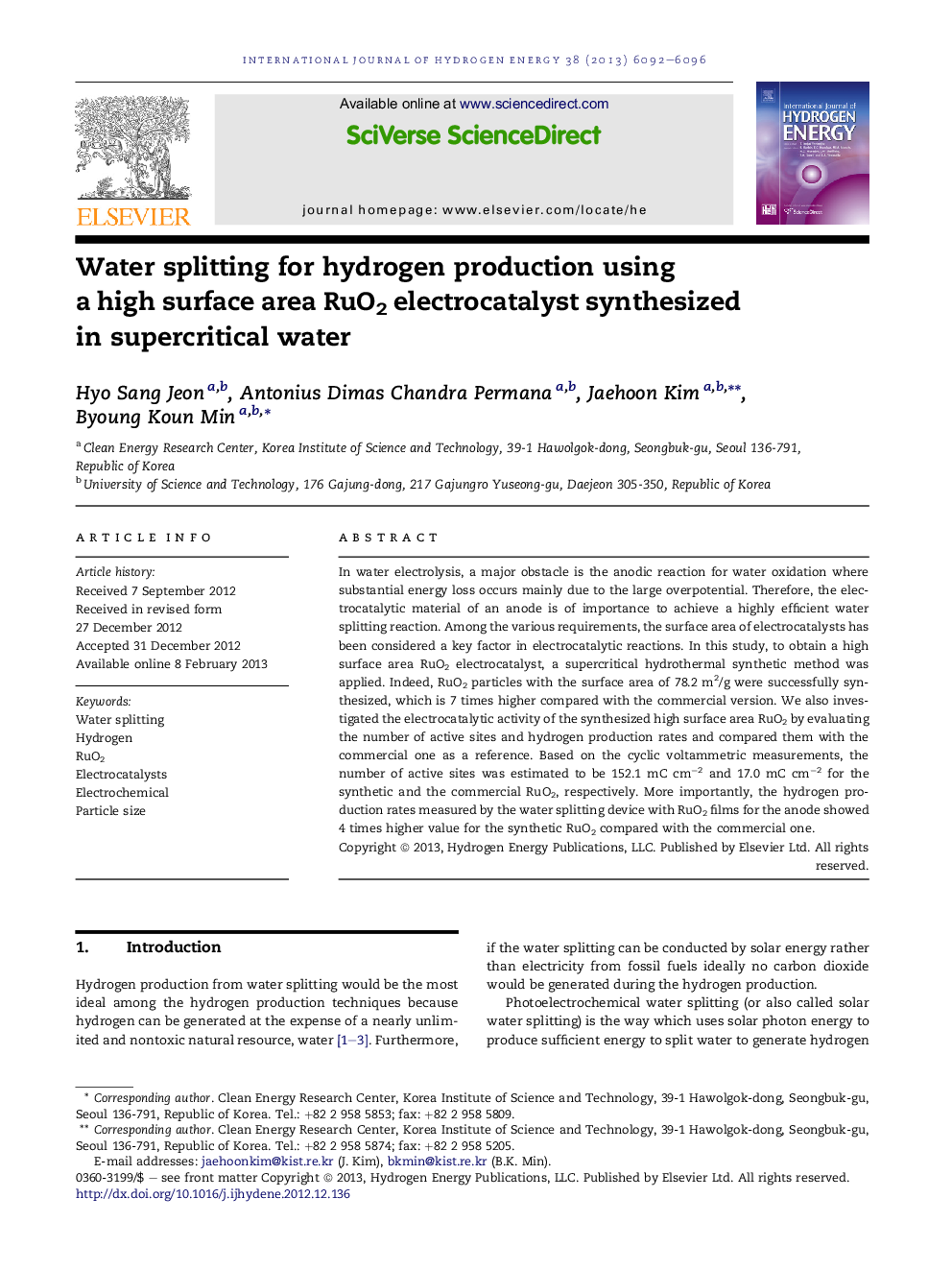| Article ID | Journal | Published Year | Pages | File Type |
|---|---|---|---|---|
| 1281726 | International Journal of Hydrogen Energy | 2013 | 5 Pages |
In water electrolysis, a major obstacle is the anodic reaction for water oxidation where substantial energy loss occurs mainly due to the large overpotential. Therefore, the electrocatalytic material of an anode is of importance to achieve a highly efficient water splitting reaction. Among the various requirements, the surface area of electrocatalysts has been considered a key factor in electrocatalytic reactions. In this study, to obtain a high surface area RuO2 electrocatalyst, a supercritical hydrothermal synthetic method was applied. Indeed, RuO2 particles with the surface area of 78.2 m2/g were successfully synthesized, which is 7 times higher compared with the commercial version. We also investigated the electrocatalytic activity of the synthesized high surface area RuO2 by evaluating the number of active sites and hydrogen production rates and compared them with the commercial one as a reference. Based on the cyclic voltammetric measurements, the number of active sites was estimated to be 152.1 mC cm−2 and 17.0 mC cm−2 for the synthetic and the commercial RuO2, respectively. More importantly, the hydrogen production rates measured by the water splitting device with RuO2 films for the anode showed 4 times higher value for the synthetic RuO2 compared with the commercial one.
► For water splitting hydrogen generation RuO2 films were prepared by a paste coating method using RuO2 particles. ► A supercritical hydrothermal synthesis method was used for the preparation of RuO2 particles. ► RuO2 particles synthesized show 7 times higher surface area compared with the commercial version. ► The number of active sites and hydrogen production rates were evaluated for the RuO2 films.
